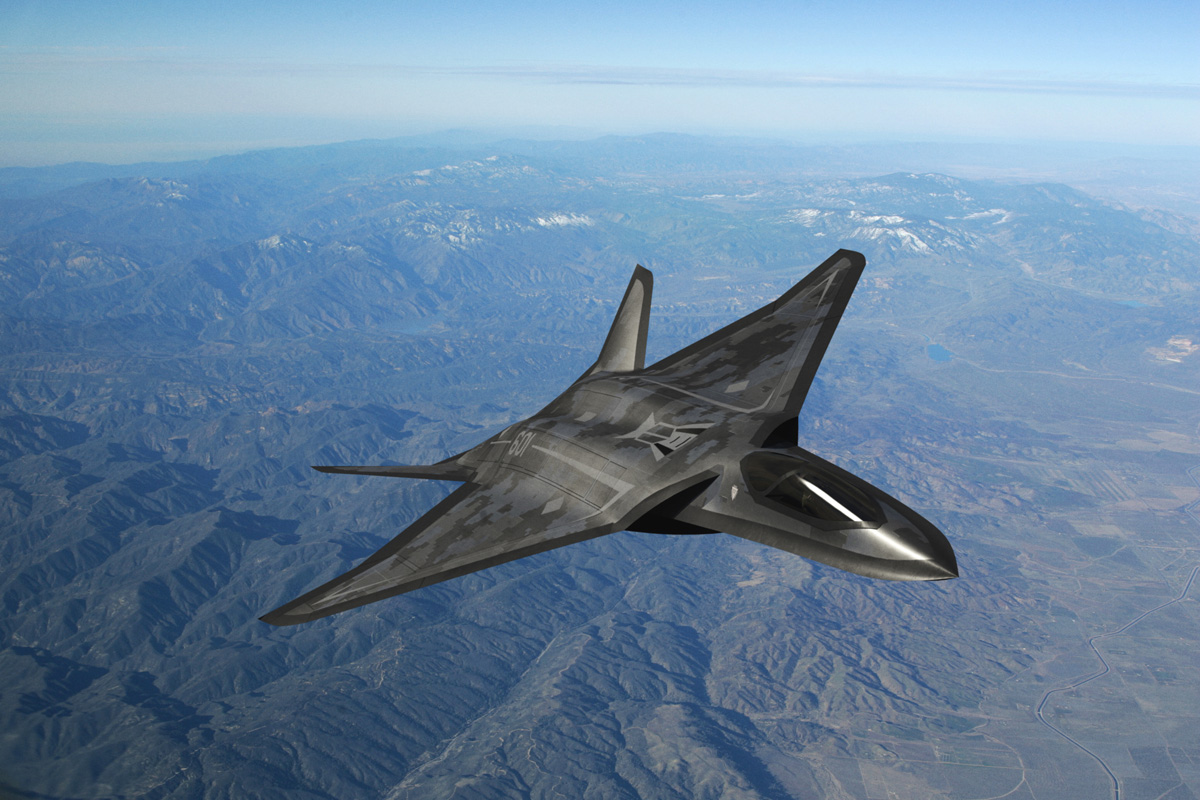
Jet fighters of the future
The first official presentation of the new generation Tempest combat aircraft concept from BAE Systems took place this year at the International Aviation Show in Farnborough. Photo Team Storm
The increasingly visible end of the Eurofighter Typhoon is forcing decision makers in Europe to make many decisions about future jet fighters in a short time. Although the year 2040, when the withdrawal of Typhoon aircraft should begin, seems quite far away, it is highly recommended to start work on new combat aircraft today. The Lockheed Martin F-35 Lightning II program showed that with such complex designs, delays are inevitable, and this, in turn, created additional costs associated with the need to extend the life and modernization of the F-15 and F-16 aircraft in the United States.
Storm
On July 16 this year, at the Farnborough International Air Show, British Defense Secretary Gavin Williamson officially presented the concept of a future jet fighter, which will be called the Tempest. The presentation of the layout was accompanied by an introduction to the strategy of British combat aviation for the coming years (Combat Air Strategy) and the role of local industry in the global arms market. Initially announced funding from the British government (over 10 years) should be £2 billion.
According to Gavin, the aircraft is the result of the Future Combat Air System (FCAS) program, which was included in the Defense Strategic Defense and Security Review 2015, which is a strategic review of the UK's security and defense. . According to him, the number of active squadrons of Typhoon combat aircraft will be strengthened, including by extending the service life of the earliest purchased aircraft of this type from 2030 to 2040 24 Typhoon Tranche 1 combat aircraft, which were supposed to be "retired" , should be used to form an additional two squadrons. At that time, the UK had 53 Tranche 1s and 67 Tranche 2s at its disposal and began taking delivery of the first Tranche 3A, purchased in quantities of 40, with an option for an additional 43 Tranche 3Bs.
There are indications that by 2040 the RAF will be using a mixture of Typhoon fighters of all varieties, and only those acquired later will remain in service after that date. Prior to this, the first new-generation aircraft will have to reach initial combat readiness in combat units, which means that their introduction into operation will have to begin 5 years earlier.
The Eurofighter Typhoon jet fighter is constantly being improved, and although it was originally an air superiority fighter, today it is a multi-role machine. In order to reduce costs, the UK will likely decide to keep the Tranche 1 aircraft as fighters, and newer versions, with greater capabilities, will replace the Tornado fighter-bombers (part of their tasks will also be taken over by the F-35B Lightning fighters). with characteristics of reduced visibility)).
The FCAS platform mentioned in the 2015 review was supposed to be an unmanned aerial vehicle built on disruptive detection technology developed in cooperation with France (based on technology demonstrators BAE Systems Taranis and Dassault nEUROn). They also discussed cooperation with the United States in the further development of existing systems, as well as support for work on its own platform, which should ensure that the UK retains a leading role in the international arena in the development and production of combat jet aircraft.
Tempest in its final form should be presented in 2025 and will be able to operate on a very complex and heavy battlefield. It is supposed to have extensive anti-access systems and it will become more and more crowded. It is in such conditions that the combat aircraft of the future will operate, and therefore it is believed that in order to survive they will have to be inconspicuous, with high speed and maneuverability. The features of the new platform also include high avionics capabilities and advanced air combat capabilities, flexibility and compatibility with other platforms. And all this at a purchase and operating price acceptable to a wide range of recipients.
The team in charge of the Tempest program will include BAE Systems as the main organization responsible for advanced combat systems and integration, Rolls-Royce responsible for aircraft power supply and propulsion, Leonardo responsible for advanced sensors and avionics, and MBDA which should provide combat aircraft.
The path to a qualitatively new platform should be characterized by the evolutionary development of components that will previously be used on Typhoon combat aircraft, and later smoothly switch to Tempest aircraft. This should keep the Eurofighter Typhoon's leading role on the modern battlefield, while at the same time making it easier to work on the next generation platform. These systems include the new Striker II helmet display, the BriteCloud self-defense kit, the Litening V optoelectronic surveillance and targeting pods, the multi-role radar station with an active electronic scanning antenna, and the Spear family of air-to-surface missiles. rockets (Cap 3 and Cap 5). The concept model of the Tempest combat aircraft presented at Farnborough demonstrates the main technological solutions that will be used on the new platform, and the related features of the aircraft.